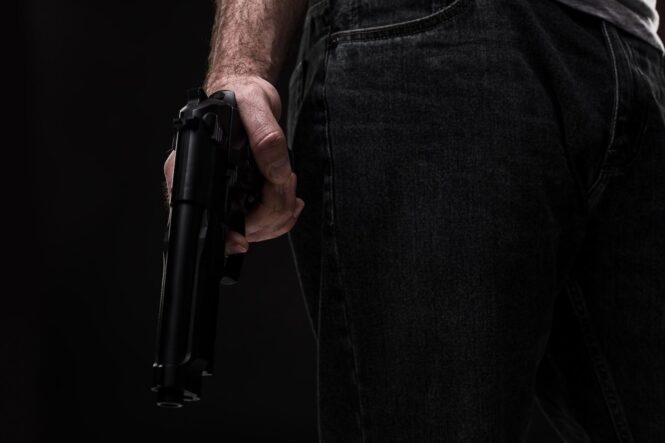In the complex and often contentious realm of firearms, a tapestry of misunderstanding and exaggeration shrouds the truth. The discourse surrounding guns is riddled with myths that, if left unchallenged, can distort perceptions and hinder informed discussions.
In this article we partnered up with the reputable online gun platform Arms Directory to set the stage for a closer examination of common gun myths and the compelling truths that lie beneath the surface. Navigating through this landscape requires a commitment to unraveling misconceptions, fostering a more informed public discourse, and ultimately, understanding the multifaceted nature of guns and their impact on society.
More Guns Lead to More Crime

A pervasive belief suggests that an increase in gun ownership correlates with a rise in criminal activities. However, a nuanced exploration of available studies reveals a more complex reality. Contrary to the myth, numerous research endeavors have failed to establish a definitive and consistent link between higher gun ownership rates and elevated crime levels.
While this assertion might seem counterintuitive, studies consistently show that the relationship between guns and crime is intricate and influenced by various factors, including socio-economic conditions, cultural contexts, and the effectiveness of law enforcement.
It is crucial to scrutinize these findings carefully, dismantling the simplistic notion that more guns inevitably equate to more crime. By doing so, we can engage in a more nuanced and evidence-based discourse surrounding gun ownership and its potential impact on societal safety.
Gun Control Laws Don’t Work
A prevailing myth asserts that implementing gun control measures is ineffective in reducing gun violence. Contrary to this belief, empirical evidence demonstrates that specific gun control laws can indeed contribute to a decline in gun-related incidents.
Measures like comprehensive background checks and red flag laws have shown efficacy in preventing individuals with a history of violence or mental health issues from acquiring firearms. These regulations act as preventive measures, providing a legal framework to identify and restrict access to firearms for those deemed potentially dangerous.
Acknowledging the effectiveness of certain gun control laws is crucial in fostering a balanced conversation about firearm regulations. While it’s essential to respect individuals’ rights, recognizing the positive impact of well-crafted legislation on public safety is a vital step in shaping informed discussions surrounding gun control.
Guns Make People Safer

One prevalent myth suggests that owning a firearm enhances personal safety. However, research challenges this notion, revealing a complex relationship between gun ownership and safety.
While guns can be employed for self-defense, studies consistently indicate that the presence of firearms in homes elevates the risks associated with homicide, suicide, and accidental shootings. The accessibility of firearms increases the likelihood of impulsive acts and escalates the severity of domestic disputes. This underscores the importance of considering the broader implications of widespread gun ownership.
Recognizing the nuanced dynamics surrounding the impact of guns on safety is crucial for fostering informed discussions on responsible firearm ownership and implementing measures to mitigate associated risks.
Assault Weapons Are More Dangerous Than Other Firearms
A common misconception surrounds the perceived danger of assault weapons compared to other firearms. The truth lies in a nuanced understanding of their impact on overall gun violence. While assault weapons can inflict severe damage in high-profile mass shootings, studies indicate that their contribution to the broader spectrum of gun-related incidents is relatively small.
The majority of firearm-related crimes involve handguns rather than assault weapons. Stricter regulations and bans on assault weapons may not substantially address the underlying causes of gun violence. To comprehensively address the issue, a holistic approach considering various firearm types and their specific roles in different contexts is necessary. This nuanced perspective allows for more effective policymaking and a better-informed public discourse on gun control.
Gun Myths We Got From Movies

Addressing gun myths is crucial for fostering a more accurate understanding of firearms among the public. Recognizing the distinction between cinematic portrayals and real-world firearm dynamics is essential for responsible gun ownership, informed public discourse, and effective policymaking.
Infinite Ammunition Trope
One prevalent myth perpetuated by movies is the infinite ammunition trope. Cinematic portrayals often depict characters firing numerous rounds without reloading, creating an unrealistic expectation of firearm capabilities. In reality, magazines have finite capacities, and reloading is a critical aspect of responsible firearm use.
Pinpoint Accuracy Illusion
Another common cinematic myth involves the notion of guns having pinpoint accuracy at all times. Movies frequently show characters effortlessly hitting distant targets with perfect precision. In reality, accuracy depends on various factors such as distance, shooter skill, and the type of firearm used. Portraying firearms as foolproof instruments can lead to dangerous misconceptions about the difficulty of hitting a target in real-life scenarios.
“Shooting to Wound” Misconception
Movie scenes featuring protagonists easily disarming opponents by shooting weapons out of their hands contribute to the myth of “shooting to wound.” In reality, aiming for extremities is highly impractical and risky. Firearms training emphasizes shooting center mass for a more reliable and effective means of neutralizing a threat.
Silencer Distortion
The depiction of suppressors, commonly known as silencers, in movies fosters misconceptions. Contrary to cinematic portrayals, suppressors do not completely silence gunshots but rather reduce the noise to safer levels. This myth can contribute to misguided beliefs about the capabilities and purposes of suppressors in real-world scenarios.
Exaggerated Ballistic Trauma
Movies often present a simplified view of firearm effects, especially in terms of ballistic trauma. Cinematic portrayals exaggerate the immediate and dramatic impact of gunshot wounds, overlooking the complex and sometimes delayed nature of injuries.
“Cocking a Gun” Fiction
The concept of “cocking a gun” for added tension is a recurring movie myth. In reality, modern firearms rarely require manually cocking before firing, as they are designed to be ready to shoot without this additional step.
Final Words
In conclusion, unraveling the fabric of gun myths is crucial for a well-informed and responsible perspective on firearms. As we challenge misconceptions about crime rates, gun control laws, personal safety, and the impact of movies on our perceptions, we pave the way for a society grounded in truth.
Armed with accurate knowledge, we can advocate for sensible policies, encourage responsible gun ownership, and foster a safer community. It’s time to dispel the myths, embracing a narrative that aligns with reality and promotes a nuanced understanding of guns and their role in our society.
 Imagup General Magazine 2024
Imagup General Magazine 2024



